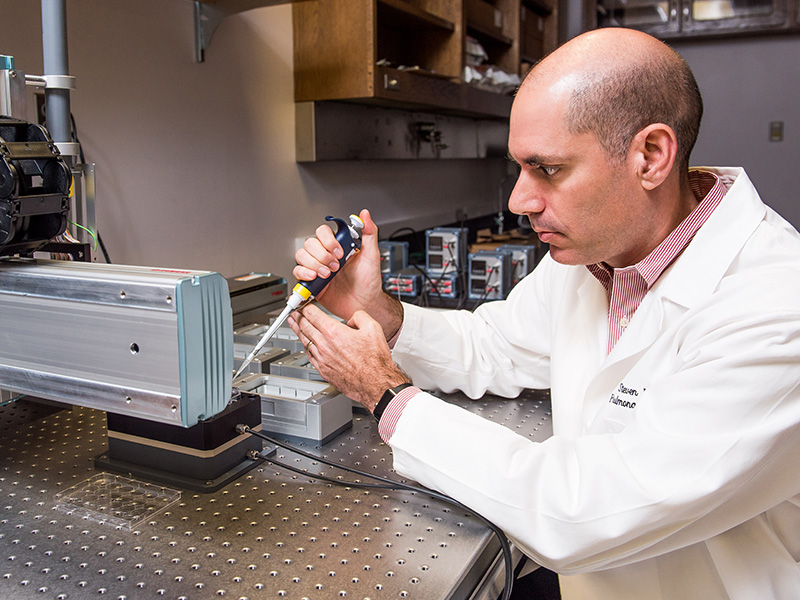

Steven Rowe, M.D., the director of the Gregory Fleming James Cystic Fibrosis Center and a professor in the Division of Pulmonary, Allergy and Critical Medicine at UAB, is the first winner of the School of Medicine’s Featured Discovery, an initiative designed to celebrate important research from School of Medicine faculty members. He conducted research involving a two-drug combination therapy for cystic fibrosis. Dr. Rowe and his team found that the therapy is effective in improving lung function in patients with certain mutations in the CFTR gene responsible for the disease. Read more from UAB News here.
The School of Medicine communications staff sat down with Dr. Rowe to get his insights about his research, UAB and the science community.
Q: What makes cystic fibrosis research unique?
A: This is an archetype of precision medicine. The CF gene was among the first to be cloned. We discovered its function and how it contributes to pathophysiology. This enabled drug screening programs, which discovered molecules that altered protein function and also biomarker programs that could accurately measure modulation of the basic defect and definitive measures of clinical outcome. Now, we are preparing to change the face of the disease for the vast majority of patients. This is one of the more remarkable stories in modern medicine. The future will enable individualized therapy based on one’s specific CF mutation and which drugs work best in a single patient’s cells.
We are also highly cognizant of the need to affect all CF patients, including those with nonsense mutations. Our research teams at UAB and Southern Research are working tirelessly on this unmet challenge and making substantial progress in the laboratory.
Q: What is your research’s relevance to human disease?
A: This advance is highly relevant to the treatment of cystic fibrosis, and it could apply to other more common airway diseases such as COPD or asthma. Research in our group is examining that hypothesis presenting in both basic research studies and clinical trials.
Q: When did you know you had an important discovery?
A: We were highly confident because we had established the proof of concept in another group of CF patients and were experienced with highly predictive biomarkers in which this treatment was shown to work.
Q: How do you feel your research will impact the science community?
A: This is a substantial advance for two major reasons. First, these data led to the approval of a highly effective treatment that addresses the basic defect in approximately 7 percent of CF patients. This causes important clinically meaningful changes in lung function, body weight, and overall health. Second, this two-drug combination will be the basis for three-drug therapy, which is already in clinical trials and promises to provide highly effective therapy for 90 percent of CF patients.
Q: What made you come to UAB?
A: I came to UAB for residency because of the strength of the training program and the reputation of the CF Center. The mentorship I found was extraordinary and has allowed me to make a home here and grow the School of Medicine’s CF program to among the top centers in the U.S., impacting a broad array of airway diseases.